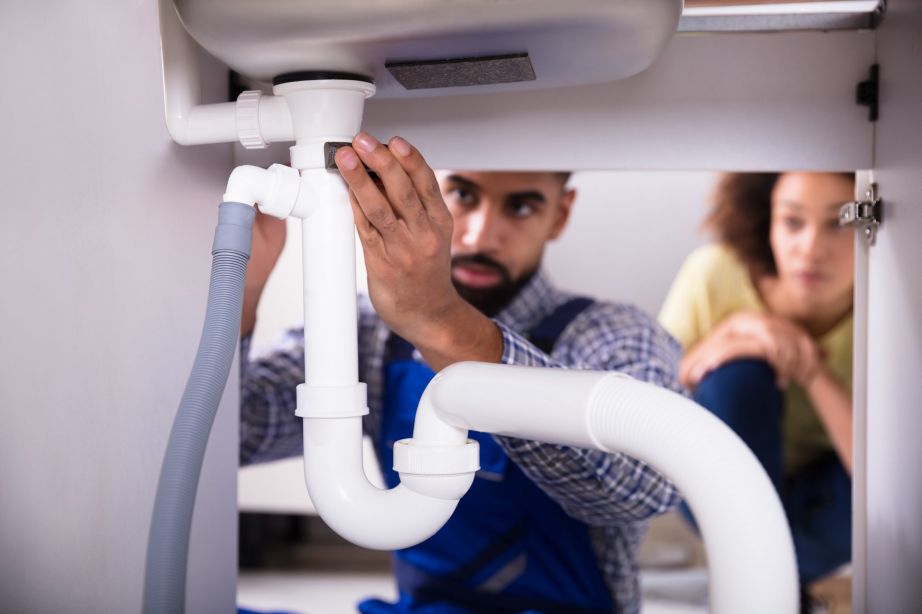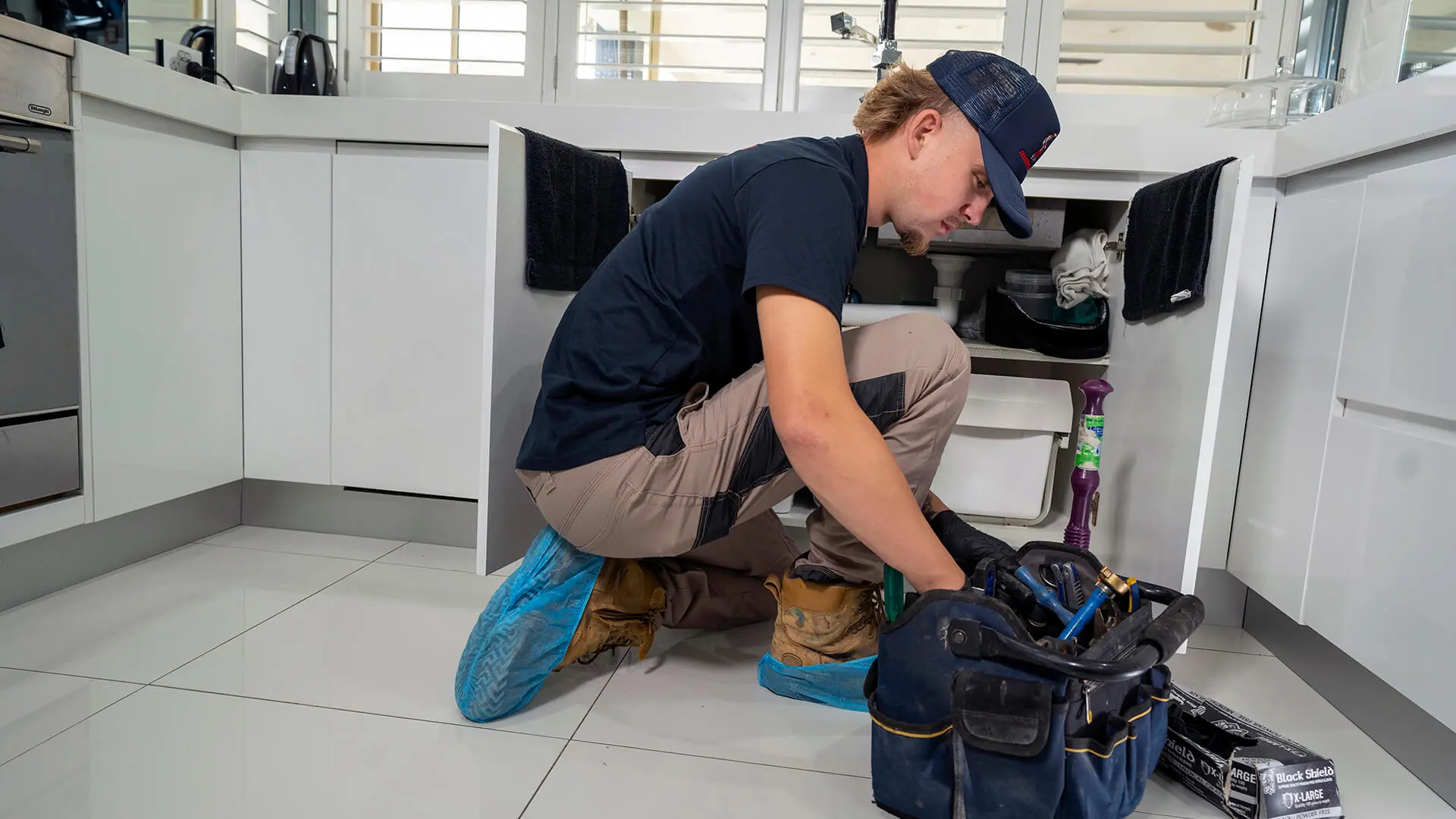Easy-To-Follow Instructions To Fix A Slow-Draining Sink
Easy-To-Follow Instructions To Fix A Slow-Draining Sink
Blog Article
We've found the article about Solved! How to Fix a Slow Sink Drain listed below on the net and reckoned it made perfect sense to share it with you in this article.

Intro
We've all been there: You're brushing your teeth or washing your hands, and you see the water pooling in the sink. Rather than swiftly swirling away, it sticks around, turning your once-refreshing morning regimen right into a miniature overload scene. A slow-draining sink isn't just aggravating; it's commonly an indication of bigger plumbing concerns hiding beneath the surface area. The good news is that the majority of slow-draining sinks can be taken care of with a little knowledge, a few fundamental devices, and some persistence. All set to tackle this job head-on? Allow's roll up our sleeves and dive right in.
Understanding the Sources Of a Slow-Draining Sink
Before you start poking around in your pipes, it assists to recognize what could be triggering the downturn. Recognizing the origin makes it simpler to pick the ideal repair.
Typical Wrongdoers Behind Slow Drain
So, what's obstructing points up? Normally, it's a combination of day-to-day debris-- assume hair, soap scum, toothpaste residue, and remaining food fragments. Gradually, these little bits accumulate and hold on to the pipeline walls, slowly narrowing the passage and making it harder for water to travel through. In many cases, natural resource from tough water can additionally include in the crud, developing the excellent storm for stubborn obstructions.
When is it Time to Take Action?
If you discover the water draining slower than typical, it's an excellent idea to intervene sooner as opposed to later. Waiting too long could bring about complete obstructions, unpleasant odors, or perhaps pipe damage. If the water takes greater than a few seconds to remove after turning off the faucet, consider it a warning and get ready to put on your DIY hat.
Tools and Materials You'll Need
The right devices make all the distinction. Fortunately, you won't need a completely equipped plumber's van to finish the job.
Necessary Devices for DIY Repair Works
A bettor is your best starting point. A little, sink-sized plunger produces suction that can remove minor obstructions. For more persistent blockages, a drainpipe snake (occasionally called a plumbing professional's auger) works marvels. A pair of handwear covers, a flashlight, and possibly a set of safety safety glasses are likewise useful.
Suggested Cleaning Solutions
Light dish soap and warm water can help break down oily accumulation. A blend of baking soda and vinegar is a time-tested natural home remedy, and chemical cleaners use a more environment-friendly approach. Maintain chemical drainpipe cleansers as a last option, as they can be rough on your pipelines.
Safety First: Preventative Measures and Prep work
Before you launch into unclogging mode, think about safety. You're handling potentially dirty water and debris, so slip on a set of gloves. If you're using chemical cleansers, guarantee the space is well-ventilated and comply with the directions on the tag.
Safety Gear and Office Configuration
Lay down some old towels or rags around the sink area to catch dashes. Eliminate any type of items that may enter your way, like soap dispensers or tooth brush owners. Make certain you have excellent illumination-- grab a flashlight if required.
Step-by-Step Guide to Repairing a Slow-Draining Sink
Currently, let's get involved in the nitty-gritty. This step-by-step process will certainly direct you via basic methods to restore your sink's water drainage.
Action 1: Eliminate and Tidy the Stopper
Frequently, the stopper (that small plug you push down to block water) is the very first culprit. Remove it meticulously and clean off any type of hair or substance caught around its base. Wash it thoroughly before putting it back in place.
Step 2: Use a Plunger to Remove Debris
Got that plunger ready? Position it over the drain and offer it a couple of company pumps. The concept is to develop suction that can loosen any blockage. If you see bits of debris drifting up, you're on the appropriate track.
Action 3: Attempt a Drain Serpent or Cable Hanger
If the bettor doesn't suffice, it's time to bring out the drain snake. Carefully feed it into the drainpipe and twist as you go. You might really feel some resistance-- that's likely the obstruction. Maintain twisting and drawing until you remove the blockage. If you don't have a drainpipe snake, a corrected the alignment of cable wall mount can work in a pinch.
Tip 4: Apply a Do It Yourself Drain Cleanser
An all-natural cleaner made from baking soft drink and vinegar can break down recurring crud. Pour half a cup of baking soda right into the drainpipe, adhered to by half a mug of vinegar. Allow it fizz for around 15 minutes, after that flush with hot water. This chain reaction commonly does wonders for small obstructions.
Tip 5: Reassemble and Check the Sink
Placed everything back together and run the faucet. Does the water now swirl down the tubes at a commendable rate? If yes, offer on your own a pat on the back. Otherwise, don't despair-- there are still a few even more tricks up your sleeve.
Alternate Techniques for Stubborn Clogs
Not all clogs are created equivalent. If your sink still declines to coordinate, take into consideration these alternate options.
Baking Soda and Vinegar Approach
We currently discussed this, however it deserves noting again. This mild, environmentally friendly approach is safer than chemical cleansers and typically rather efficient.
Chemical Drain Cleansers
Enzyme-based cleaners utilize natural microorganisms to digest raw material. They're an exceptional selection if you're seeking to stay clear of severe chemicals. Just remember, they may take a bit longer to function their magic.
Chemical Drain Cleaning Company: Advantages And Disadvantages
Chemical cleansers can blast with hard obstructions fast, but they're not without drawbacks. They can create warmth and fumes, damages pipelines if made use of exceedingly, and present ecological risks. Utilize them moderately, and constantly follow the instructions very carefully.
Safety Nets to Maintain Your Sink Flowing
Avoidance is the most effective cure. By adopting a few straightforward routines, you can keep your sink from reducing to begin with.
Routine Cleaning Habits
Wipe down the sink basin and component area regularly. Get rid of hair or food particles before they have an opportunity to wash down the drain.
Preventing Hazardous Materials Down the Drain
Hesitate before unloading coffee premises, grease, or coarse vegetable scraps down the sink. These wrongdoers cling to pipe wall surfaces, developing clogs in time.
Regular Maintenance Checks
Arrange a fast regular monthly evaluation. Run warm water via the sink for a few minutes, taking notice of the circulation. If it appears slow, act quick before it comes to be a full-on blockage.
When to Call a Specialist Plumbing
Sometimes, regardless of how hard you attempt, that obstruct simply will not move. That's when it's time to bring in the pros.
Indicators That Suggest an Extra Severe Problem
If your sink drains pipes gradually despite multiple attempts, or if you see water backing up in various other fixtures (like your shower or commode), you might have an extra severe plumbing issue prowling much deeper in the system.
Stabilizing DIY Initiatives with Expert Aid
While DIY can save you cash and use a feeling of achievement, there's no shame in calling an expert. A professional plumbing technician can analyze your whole pipes setup, guaranteeing there's no underlying damage or long-lasting problem that can cost you more later on.
Contrasting Costs and Long-Term Solutions
Before choosing, take into consideration the big picture. A low-cost, quick fix may solve the issue temporarily, but investing in a much more irreversible solution might save you money and stress and anxiety in the long run.
Weighing the Expenditures of Do It Yourself vs. Expert Fixes
DIY solutions frequently cost little bit greater than the price of a bettor or a container of cooking soft drink. Specialist services, on the other hand, featured a price tag however may stop repeated issues and costly repairs later on.
Purchasing High Quality Fixtures and Upgrades
If your sink's design adds to constant obstructions, it could be worth updating to higher-quality fixtures or altering the pipes format. Consider this a financial investment in your home's performance and convenience.
Final thought
A slow-draining sink can feel like a small irritation, yet it's usually an indication that your pipes needs a little tender loving care. By comprehending the root causes, using the right tools and strategies, and devoting to easy safety nets, you can keep your sink streaming easily. And when all else stops working, never be reluctant to call a professional-- your home's pipes deserves the financial investment in treatment and maintenance.
Three Common Ways to Fix a Slow Drain
Baking Soda Method
Boil a full pot of water. Measure out cup of baking soda and pour it down the drain. Then take cup of the magical cleansing substance known as white vinegar and drop that down there too. Allow the mixture to fizz in the drain for five minutes as the vinegar and baking soda combine. Now dump in that whole pot of boiling water. This combination of cleaning substances should clear out anything that is causing your sink to drain slowly. If it doesn t...
Zip-It
If the baking soda method doesn t clear out your drain, it may be because a significant amount of hair and/or other debris has collected there and you need to remove it. Purchase a Zip-It tool at any home improvement or hardware store and insert it into your drain. It will catch any collected hair or debris that s blocking the flow of water. Pull it out. If it s got a big clump of hair, etc. on the end, you ve probably got your culprit.
Drain Cleaner
If these methods don t work, there is the standard drain cleaner that you can also buy in a hardware store or even your local grocery store. It s better if you can use a household solution, but these drain cleaners often work in a pinch. They re very simple to use. You generally just dump them in your drain and wait. If even this method is not effective, it may be time to call the plumber.
https://www.mrrooter.com/oneida/about-us/blog/2017/july/three-common-ways-to-fix-a-slow-drain/

We hope you liked our excerpt on . Many thanks for finding the time to read our content. I beg you take the time to share this content if you liked it. We value your readership.
Request An Appointment Report this page